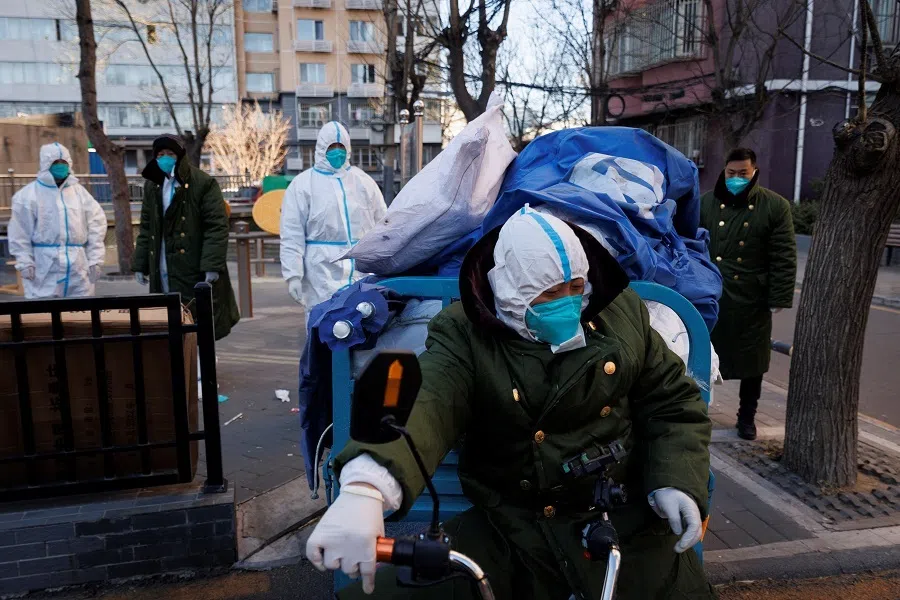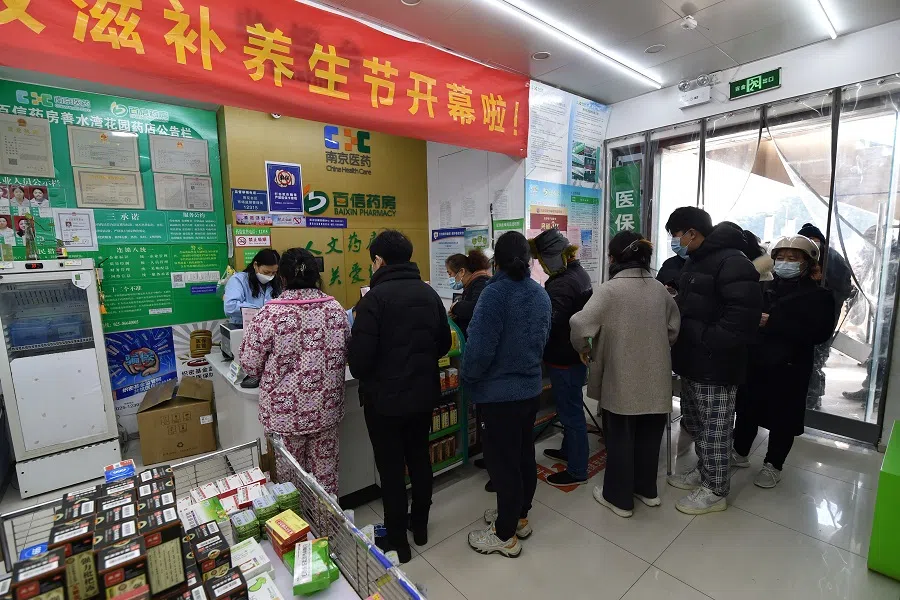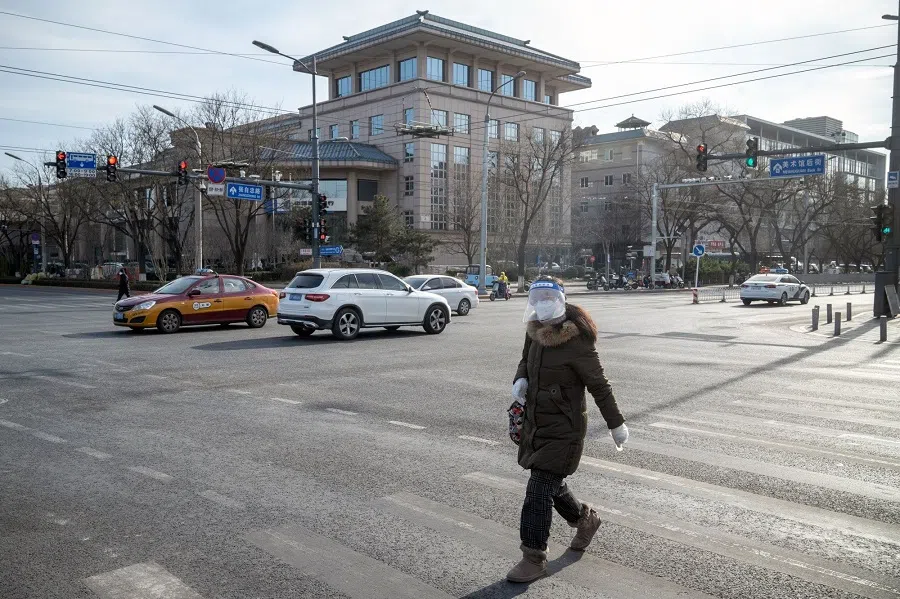Chinese economy in 2023: Worse before it gets better
As Chinese officials review the year's economic work and set the tone for macroeconomic policies in the coming year, Han Yong Hong assesses that the new team formed after the 20th Party Congress will have its work cut out reviving the Chinese economy amid tough challenges.

As Covid cases surged in Beijing, the Chinese Communist Party (CCP) reportedly convened their annual Central Economic Work Conference (CEWC) on 15 December. Earlier, US media had speculated that the meeting would be postponed because of the pandemic, but Reuters quoted sources familiar with the matter as saying that the economic meeting would go ahead on 15-16 December. We will soon know if this is true.
A yearly December affair, the CEWC analyses and summarises the year's economic work and sets the tone for macroeconomic policies in the coming year. Growth targets for the new year are also discussed at this meeting viewed as a weather vane of the country's future economic trends.
Economic indicators bleak
Also on 15 December, China's National Bureau of Statistics (NBS) reported on the performance of the national economy in November. While the NBS said that the Chinese economy "sustained the general momentum of recovery" in November, several key indicators flashed warning lights upon closer inspection, suggesting a much gloomier situation than what was said.
New house prices in 70 large and medium-sized cities fell for 15 consecutive months, and the housing market still has not bottomed out.
According to the figures, in November, the total retail sales of consumer goods was down by 5.9% year-on-year, the second monthly drop in a row and far exceeding the median market expectation of around 3%. The urban surveyed unemployment rate was 5.7% in November, 0.2 percentage points higher than in October. Among them, the urban surveyed unemployment rate in 31 major cities had soared to 6.7%, 0.7 percentage points higher than the previous month and also the highest since May.

In November, the total value added of the industrial enterprises above the designated size rose by 2.2% year-on-year, markedly lower than October's 5% and market expectations. New house prices in 70 large and medium-sized cities fell for 15 consecutive months, and the housing market still has not bottomed out.
Looking back on the CEWC held in early December last year, it was assessed then that the Chinese economy was facing the "triple pressures" of "demand contraction, supply shocks and weakening expectations", and an "increasingly complicated, grim and uncertain" external environment. Back then, an academic Zaobao interviewed said that the CEWC's assessment was "too harsh", and that the Chinese economy would be "doomed" if the triple pressures were to occur at the same time.
A year later, the triple pressures have not been alleviated but even worsened. The Chinese economy grew 3% year-on-year in the first three quarters of the year, far below the government's GDP growth target of about 5.5%. China's annual growth rate is estimated to be only about 3%, the lowest in half a century.
Also, due to the high transmissibility of the Omicron variant, China's pandemic situation may already have been spinning out of control in early December.
Economic factor fuelled zero-Covid pullback
The NBS's new figures provide a partial answer to the question on some observers' minds: why did China announce ten new prevention and control measures on 7 December and ease Covid restrictions so quickly?
Apart from the reduced pathogenicity of the Omicron variant and the protests that broke out in several cities, economic pressure could be a key factor. Also, due to the high transmissibility of the Omicron variant, China's pandemic situation may already have been spinning out of control in early December.

World Health Organization senior officials told the media on 14 December that China was already seeing a surge in Covid cases long before the easing of restrictions. Also, some of my friends flying out of Beijing on 7 December tested positive as soon as they landed overseas. This led them to believe that the pandemic had already spread in Beijing before they left.
Worse before it gets better
Observably, the Chinese economy doesn't look like it will bounce back immediately after the easing of Covid controls. There may be new pressure points instead due to the hasty action. Namely, amid a shortage of drugs and medical supplies, the streets of Beijing are emptier this week as people stay at home to self-quarantine or stay away from catching Covid outdoors. The same situation can be seen in Wuhan and other major cities, which would certainly affect the retail and catering industries.
How long will these new pains last? Several Chinese healthcare experts have said that the current Covid-19 outbreak could peak in a month, though Shanghai's infectious diseases expert Dr Zhang Wenhong recently noted that an end to the pandemic might be three to six months away. On the other hand, a Hong Kong academic said that China must first suffer from the "shock therapy" for a few months. This shock therapy might not only apply to public health but also to the economy.
As such, people are watching to see how the CEWC will carve out a plan to stabilise growth and restore confidence.
China must waste no time in shifting its focus from containing the pandemic to stabilising growth.

A day before the crucial date of 7 December, the Politburo of the CCP met on 6 December to analyse the areas of economic work in 2023 and chart the path of achieving an overall improvement of the economy, setting the tone for the CEWC.
Stabilising growth still key
China must waste no time in shifting its focus from containing the pandemic to stabilising growth. Since the triple pressures of a year ago are still present, stabilising demand, supply and expectations should be the priority in reviving the economy.
The good news is that China still has a high savings rate of over 30%, massive human resources and the world's most complete industrial chain, which contribute to a huge growth potential. The government can revive the economy with the right policies - not large-scale stimulus packages but policies aimed at keeping enterprises enthused at the micro level, and relieving the pressure on local government debt and the real estate sector at the macro level.

On the other hand, as intense competition with the US in the areas of technology and supply chain is expected to persist, China needs to handle this challenge for the long haul. In that context, recent guidelines released by the CCP's Central Committee and the State Council on expanding domestic demand and fostering a sound domestic demand system in the years up to 2035, are clearly aimed at counteracting the long-term pressures on that front.
Taking the helm amid tough challenges, minimising the loss of lives under the pandemic, and bringing the economy to a soft landing will be a massive undertaking...
2023 is the flagging off of a new start following the CCP's 20th Party Congress, and also the first year of the new government. Li Qiang, who just rose to become China's second-highest ranking official, is set to become China's next premier in March next year. Taking the helm amid tough challenges, minimising the loss of lives under the pandemic, and bringing the economy to a soft landing will be a massive undertaking for the new team under Li Qiang. All eyes are on how the new Chinese government will weather the storm and successfully turn things around.
This article was first published in Lianhe Zaobao as "中国经济2023年面临抢滩大任".
Related: From zero-Covid to living with the virus: Chinese society's adaptability put to the test | Is China ill-prepared for a surge in Covid cases? | What can we expect now that China's 'zero-Covid' is no more | Will China get its economy back on track in 2023? | China is facing a harsh economic winter

![[Big read] Paying for pleasure: Chinese women indulge in handsome male hosts](https://cassette.sphdigital.com.sg/image/thinkchina/c2cf352c4d2ed7e9531e3525a2bd965a52dc4e85ccc026bc16515baab02389ab)


![[Big read] How UOB’s Wee Ee Cheong masters the long game](https://cassette.sphdigital.com.sg/image/thinkchina/1da0b19a41e4358790304b9f3e83f9596de84096a490ca05b36f58134ae9e8f1)
